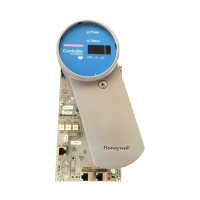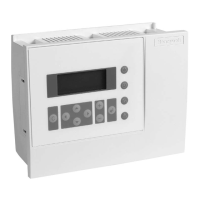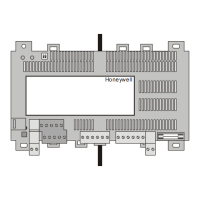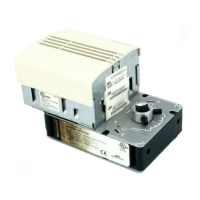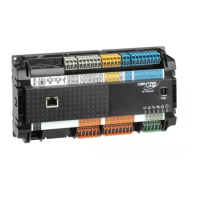Fault classifications
Hard/Severe Failures
R301.1 Experion C300 Controller User's Guide 237
11/06 Honeywell
Fault Classification Description
Installation/Startup
Failure
Software detected failure. Controller may not become operational.
• Installation/Startup failure on a non-redundant controller results in
the inability to commence control or view the controller on the
network.
• Installation/Startup failure on the backup controller results in the
inability to complete initial synchronization or view the controller on
the network.
• Installation/Startup failure does not apply to the synchronized
primary controller, because installation & startup must be
successful to reach a synchronized primary state.
Communications
Failure
Communication errors between peer controllers, nodes and/or I/O
devices - including FTEB, do not cause any controller state change.
Hard/Severe Failures
When a hard failure is detected, the following controller events occur depending on its
redundancy status:
• Hard/Severe failure on a synchronized primary controller triggers a switchover to the
backup controller. The I/O modules associated with the controller force their outputs
to safe values. If capable, the failed controller reboots into the FAIL state and
captures diagnostic data which may contain internal state events that occurred prior
to a failure. The Ctools utiltity can be used to retrieve the diagnostic data.
• Hard/Severe failure on a backup controller causes a loss-of-synchronization. The
Primary controller continues operation, but enters the ‘Not synchronized’ state. If
the redundant controller pair was not synchronized when the fault occurred, then the
failed controller reboots into the FAIL state, if capable. No further synchronization
will occur and no switchover will occur.
• Hard/Severe failure on a non-redundant controller causes a loss-of-control and loss-
of-view. The I/O modules associated with the controller force their outputs to safe
values. If capable, the failed controller reboots into the FAIL state and captures
diagnostic data which may contain internal state events that occurred prior to a
failure. The CTools utility can be used to retrieve the diagnostic data.
Alarm display and function block detail display
Usually a hard or severe failure results in a communication failure. Calling up the Alarm
Detail Display in Station or the Controller Block Detail Display will indicate this failure.
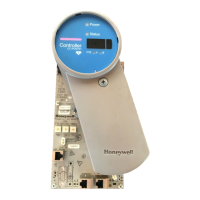
